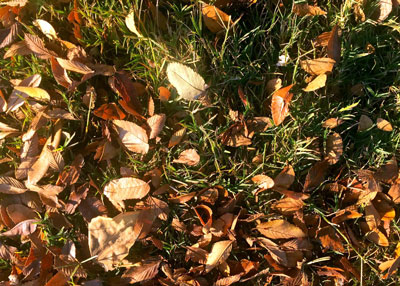Question of the Week 2: September 28, 2017
“Neil, why are my trees turning brown and losing their leaves so early?”
I’ve been asked this many times in the past several days and there are several possible explanations. They depend on the types of trees, where you are, what your weather conditions have been…oh, you’ll see. Here’s what I tell them.

Photo: Cedar elm leaves have collected beneath the tree. Note the silvery reverse of the one leaf, typical of a powdery mildew attack from earlier in the year.
• Cedar elms were hit by powdery mildew earlier this summer, and many of their leaves have started to turn yellow prematurely. No call to action now. They’ll be just fine.

Photo: Bur oak was attacked mid-summer by lace bugs. Leaves were pale tan at first, but now are light brown and starting to fall.
• American elm, chinquapin oak, bur oak and sycamore leaves have been yellow or tan for a couple of months, in most cases due to damage done by lace bugs. You’ll still be able to see the black excremental specks on the backs of the leaves. The lace bugs have done all their feeding by now, so again, there is nothing to be done at this time.
• Pecans are dropping their foliage all across Texas. This is just what pecans do toward the tail end of summer, usually about the time you begin to see the sticky honeydew drippage falling onto windshields and patio furniture beneath the trees. It would be great if they held onto their leaves a few weeks longer, but it’s not worth trying to spray for the aphids that give off the honeydew.
• Cottonwoods, fruitless mulberries, catalpas, silver maples and other large-leafed, fast-growing trees have been dropping leaves since mid-summer. It’s their reaction to hot, dry weather. The trees just can’t pull the water through their systems fast enough. They start shedding part of their responsibility when the weather becomes challenging. Deep soaking is about your only remedy, and even it can only go so far.
